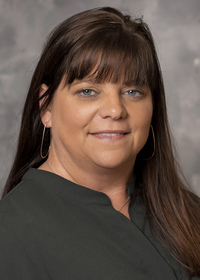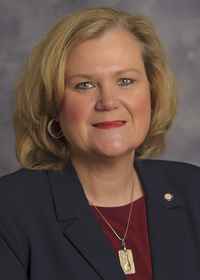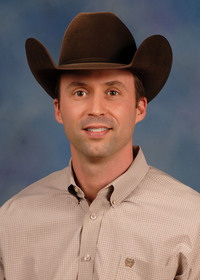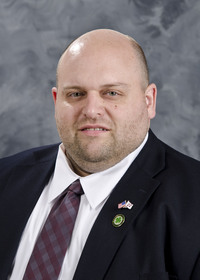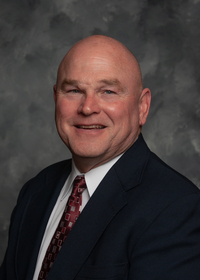Information Possibly Outdated
The information presented on this page was originally released on April 27, 2018. It may not be outdated, but please search our site for more current information. If you plan to quote or reference this information in a publication, please check with the Extension specialist or author before proceeding.
Display chronicles 4-H club’s unique history
RAYMOND, Miss. -- The 4-H Livestock Club in Hinds County has deep roots. And now that history is on display for all to see at the Multi-Purpose Livestock Building on the Hinds Community College campus.
Agents of the Mississippi State University Extension Service in Hinds County found hundreds of documents, photos and other memorabilia related to the club when they were moving their office from Jackson to Raymond a few years ago.
“We found two filing cabinets full of things dating back to the club’s beginning in the 1930s,” said Extension agent Theresa Hand. “We didn’t even know one of those cabinets was there.”
They knew they wanted to preserve the materials, but they also wanted to share the club’s unique history with the public.
“We just couldn’t believe it when we came across all this,” said Extension 4-H agent Lurlinda Soignier. “The club’s entire history is documented in these items. What a treasure, and we should share it with everyone.”
The Hinds County Livestock Association approved a five-panel display that is 8 feet by 12.5 feet and exhibits the evolution of the club. The 15-member association is a private board that manages the club’s activities and functions independently of county funding.
Begun in 1936 as a way to market the cattle business to landowners in central Mississippi during the Great Depression, the cattle show grew into the statewide Dixie National Livestock Show in which 4-H’ers from across the state compete every February. The original show was an effort to display cattle that were well-suited to the central region of the state.
“When it started, grown men showed the cattle,” said Ted Kendall III, association member and longtime 4-H Hinds County Livestock Club supporter. “The show was held in Jackson for several years until it got so big that it was too difficult to get the animals in and out of the city.”
In the 1950s, the show moved southwest of Jackson to Edwards and grew even more. Organizers also added a dance and pageant to the three-day event. The county built a cover for the show arena and separate steel buildings and modern pens for each livestock group. According to an article in the State Times newspaper on March 10, 1961, the facility was the largest, newest and most permanent facility of its kind in the state.
During the show’s tenure in Edwards, members of the original Hinds County Livestock group invited area 4-H and FFA members to join the event to help them learn about livestock production at a young age. In addition to cattle, participants showed sheep, hogs and poultry. Eventually, organizers established a separate youth show. Many of these same organizers helped develop the current Southwest District Livestock Show and the Dixie National Livestock Show.
“The show was the highlight in Edwards for several years,” Kendall said. “The facility was state of the art. But as the years went on, the buildings were deteriorating, and it became too expensive to maintain the facility.”
In the early 1990s, the association voted to move the event to Hinds Community College, where a new livestock facility had been constructed. The move made sense as Extension and Hinds have a longstanding relationship tied to both entities’ dedication to agricultural education. Ownership of the buildings and grounds at Edwards was transferred to the town.
“We are grateful for the working relationship we have with Hinds Community College,” Soignier said. “Both of our programs benefit from one another. We are fortunate to have an association that is supportive of our livestock club. Nothing we do would be possible without the support of our county supervisors and the association.”
Soignier and Hand took several months to sort through the materials. They then worked with designer Jean Whitehead of Mississippi Art and Design to lay out the display, using a representative selection that would best work on the presentation. Signs First Metro made the display under the direction of Harold Miller. The association plans to install display cabinets to show off the numerous trophies, ribbons, banners, show programs and other items earned by the club’s members over the years.
The display was funded through the association with money raised through association activities.


